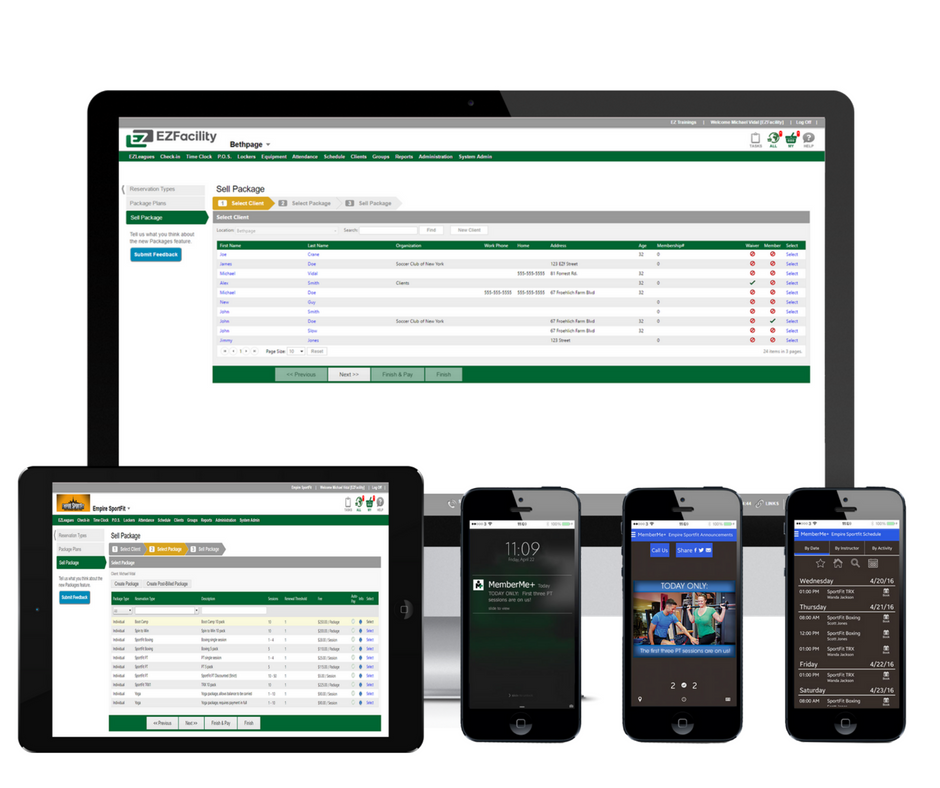If you run a sports center, health club, gym, or niche exercise venture, chances are you don’t have enough time. It would take someone superhuman, after all, to open a facility early in the morning; oversee employees, attend meetings, troubleshoot, pay bills, coordinate with contractors, and do all the other zillion things required of business owners (including maybe even running a class or a training session or two); perform end-of-the-day accounting and shut-down routines (the end of the day often being 10 p.m.); and tend to post-work familial and social obligations while still having time leftover. Never mind finding the hours needed to grow your business in whatever way you dream of growing it.
Where Does a business software solution come in?
Software packages designed for the sports and fitness industries automate many of the processes that consume a great deal of time if you do them by hand or using basic word-processing or spreadsheet programs designed for other purposes. Business software solutions produce user-friendly reports, convey messages to employees and members, send out automatic notices to collect member dues, schedule trainers and instructors, track equipment, manage leagues, provide marketing tools, and much, much more. Automating these functions gives you more time for the things you want and need to get done. It also gives you the security that comes with knowing that one, overarching system is running your entire operation.
How do you choose the solution that’s right for your facility?
First, you have to know what needs the software must meet. Take the time to study your current business requirements, design, and mission. Review the hardware and software you already have in place, and analyze their current strengths and shortcomings. Consider also what kind of financial investment you are willing and able to make in a software package. (If all of this seems like too much of a burden on your already stuffed schedule, consider hiring an organizational analyst who can come in, determine your needs, and make recommendations. Sometimes having an outsider’s perspective is more helpful anyway.) A key part of this step: Consider not only what your business needs now, but also what it will need a year, five years, ten years down the road. You don’t want to invest in something your business will outgrow quickly.
Second, consider security.
With each passing day, more and more business applications use the cloud: that mysterious, invisible place where so much of the world’s data is stored. The more applications that use them, the more vulnerable businesses are to hackers and malware. Before you choose a software solution, ensure that the company that provides it has a reputation for security. Ask what security options the software includes. Does it encrypt stored data? What level of encryption does it support? Doing your homework in this area could save you many headaches down the road.
Finally, don’t evaluate just the software — also evaluate the vendor.
You don’t want to choose a company that executes great ideas poorly or mismanages its people or products. You do want a company with proven vendor stability. That’s not to say it has to have been around for decades, but the executive team should include industry leaders. You should consider the size of the vendor, what its core business is, and whether its software truly supports the sports and fitness industries.
Finding the right software can mean reduced expenses, increased profits, happier employees and members — and more time for you. If you’re not already using a software solution, start looking into the possibilities today. And if you are, consider an overall assessment to be sure the one you’ve got is the best one for you.










